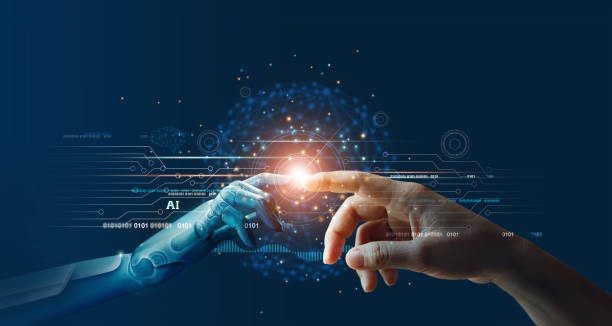AI's Job Market Impact: 5 Key Transformations (2025 Analysis)
Explore AI's transformative impact on jobs, focusing on adaptation and new opportunities rather than job loss. Discover key insights and future prospects.

Introduction to the Age of AI and Job Market Dynamics
The advent of Artificial Intelligence (AI) has profoundly impacted various sectors, including the job market. Despite widespread concerns about AI-induced job losses, recent studies suggest that its impact on employment has been relatively muted so far. Companies are increasingly using AI to streamline processes, but critics argue that AI is often used as a pretext for layoffs. This article delves into the current state of AI's influence on jobs, exploring both the transformations and the misconceptions surrounding its role in the workforce.
Background: AI's Impact on Employment
Recent analyses from Yale University's Budget Lab and the Brookings Institution indicate that AI has not significantly disrupted the labor market. These studies suggest that while AI is transforming certain jobs, it has not led to widespread job losses akin to those feared by many. According to a Pew Research study, one in five U.S. workers now uses AI on the job, but this integration has not resulted in a substantial reduction in employment opportunities.
Data from the Current Population Survey (CPS) and other sources reveal that AI may be affecting entry-level positions more than others, particularly in fields like software development and customer service. However, these impacts are not economy-wide and are often concentrated among younger workers. The overall effect of AI on aggregate employment remains small, with most changes in hiring practices attributed to broader economic trends rather than AI alone.
Key Features: Transformation vs. Replacement
The debate surrounding AI's role in the job market often centers on whether it is replacing jobs or transforming them. A report by Indeed's Hiring Lab highlights that about a quarter of jobs posted on their platform could be highly transformed by Generative AI (GenAI). This transformation involves not just automation but also the creation of new skill sets and job roles that integrate AI tools.
- Transformation: AI is not solely a tool for job reduction but also a catalyst for innovation and productivity.
- New Skill Sets: The emphasis is shifting from whether AI will replace jobs to how it will change the nature of work.
- Adaptation: Many workers need to adapt to work alongside AI systems.
As more companies adopt AI-led processes, the demand for workers skilled in managing and collaborating with AI will increase. This shift underscores the importance of retraining and upskilling in the modern workforce.
Industry Impact and Future Prospects
The integration of AI into industries is a gradual process, often requiring significant investments in technology and cultural shifts within organizations. While AI has not yet caused a significant disruption in the labor market, its potential for future impact is substantial. The pace of change is consistent with historical technological shifts, such as the introduction of computers and the internet, which took decades to fully materialize.
Critics argue that companies are using AI as a convenient excuse for layoffs, suggesting that economic factors rather than AI are driving job cuts. However, as AI continues to evolve, it is likely to play a more significant role in future economic downturns, as predicted by financial institutions like JPMorgan Chase.
Context and Implications
The public perception of AI's impact on jobs is often influenced by media narratives and public anxiety. While AI has not yet led to widespread job losses, it is transforming the nature of work and creating new challenges and opportunities. The future of employment will depend on how effectively societies adapt to these changes, invest in education and retraining, and manage the integration of AI into the workforce.
In conclusion, while AI is reshaping the job market, its current impact is more about transformation than replacement. As AI technologies continue to advance, the focus should be on preparing workers for a future where AI is a tool rather than a threat. This involves addressing the barriers that limit AI's full potential and ensuring that its benefits are equitably distributed across the workforce.


